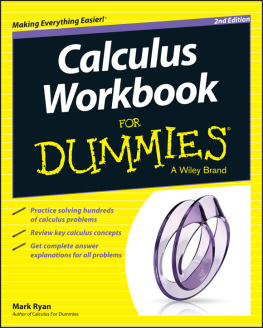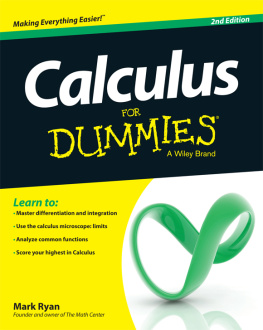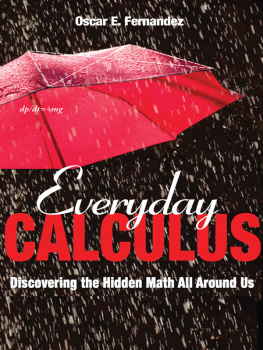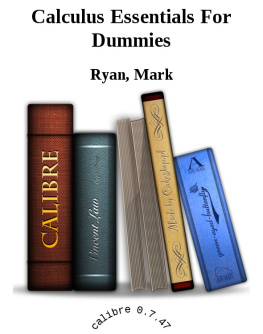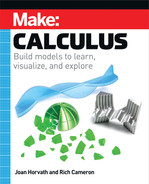

Horvath and Cameron take calculus back to its physical roots its grounding in
concrete things rather than abstractions. Build slopes with LEGO bricks, swing a
pendulum, and 3D print mathematical curves to turn them over in your hand even
experts will have an Aha! moment. George Musser, Contributing Editor, Scientific
American ; Contributing Writer, Quanta ; and author of Spooky Action at a Distance
It was a pleasure to see the authors pilot some of this books material with students at
the program I manage. The activities make complex calculus concepts accessible to an
array of learning styles, and the students enjoy engaging with the 3D printed models to
cement their understanding. Nicole Endacott, Manager of Advanced Programs, Institute
for Educational Advancement
Horvath and Cameron have done a commendable job in explaining calculus in an
easy to understand way. Their explanations using LEGO bricks, which almost everyone
understands, and their suggestions incorporating 3D printing will be very helpful in
teaching. Well done! Douglas King, retired engineer, retired high school engineering
teacher, and robotics coach
Make: Calculus is designed for the geometrical thinker who solves math-related problems better with
pictures or models than with equations. If youre currently taking calculus, or if you ever just wished
you understood it better, this book will show you the modern version of Isaac Newtons calculus.
Youll learn through physical model building, first with LEGO bricks, and then with 3D models. Youll
also have the chance to customize these models with OpenSCAD and print them while building your
understanding of the math that makes them work. Youll even get to apply a bit of Arduino code to
expand your visual understanding of the amazing world unveiled by a knowledge of calculus.
CALCULUS
MATHEMATICS /Calculus
Make_Calculus_COVER_backFIN.indd 1 Make_Calculus_COVER_backFIN.indd 1 8/8/22 11:35 AM 8/8/22 11:35 AM

Calculus
Joan Horvath and Rich Cameron
BUILD MODELS TO LEARN,
VISUALIZE, AND EXPLORE

By Joan Horvath and Rich Cameron
Calculus
Copyright 2022 Joan Horvath and Rich Cameron. All rights reserved.
Published by Make Community, LLC
150 Todd Road, Suite 100, Santa Rosa, CA 95407
Make: books may be purchased for educational, business, or sales promotional use.
Online editions are also available for most titles.
For more information, contact our corporate/institutional sales department:
800-998-9938
Publisher: Dale Dougherty
Editor: Michelle Lowman
Copy Editor: Sophia Smith
Creative Direction: Juliann Brown
Design: Terisa Davis
Tech Reviewer: Dr. Niles Ritter
2022 First Edition
Revision History for the First Edition July 2022
See https://www.oreilly.com/catalog/errata.csp?isbn=9781680457391 for release details.
Make: , Maker Shed, and Maker Faire are registered trademarks of Make Community, LLC. The Make: Community logo is
a trademark of Make Community, LLC. Make: Calculus and related trade dress are trademarks of Make Community, LLC.
Many of the designations used by manufacturers and sellers to distinguish their products are claimed as trademarks.
Where those designations appear in this book, and Make Community, LLC was aware of a trademark claim, the
designations have been printed in caps or initial caps. While the publisher and the authors have made good faith efforts
to ensure that the information and instructions contained in this work are accurate, the publisher and the authors
disclaim all responsibility for errors or omissions, including without limitation responsibility for damages resulting
from the use of or reliance on this work. Use of the information and instructions contained in this work is at your own
risk. If any code samples or other technology this work contains or describes are subject to open source licenses or the
intellectual property rights of others, it is your responsibility to ensure that your use thereof complies with such licenses
and/or rights.
978-1-68045-739-1
ii

O'Reilly Online Learning
For more than 40 years, www.oreilly.com has provided technology and business training,
knowledge, and insight to help companies succeed.
Our unique network of experts and innovators share their knowledge and expertise
through books, articles, conferences, and our online learning platform. OReillys online
learning platform gives you on-demand access to live training courses, in-depth learning
paths, interactive coding environments, and a vast collection of text and video from
O'Reilly and 200+ other publishers. For more information, please visit www.oreilly.com .
How to Contact Us:
Please address comments and questions concerning this book to the publisher:
Make: Community
150 Todd Road, Suite 100, Santa Rosa, CA 95407
You can also send comments and questions to us by email at books@make.co .
Make: Community is a growing, global association of makers who are shaping the future
of education and democratizing innovation. Through Make: magazine, 200+ annual Maker
Faires, Make: books, and more, we share the know-how of makers and promote the
practice of making in schools, libraries, and homes.
To learn more about Make: visit us at make.co .
Make: Calculus iii

Table of Contents
PREFACE
Who This Book Is For .................................................................................................................... XIV
WHAT WE ASSUME YOU KNOW ALREADY ...................................................................... XV
TEACHING AND LEARNING WITH THIS BOOK ............................................................... XVI
Developing a Hands-on Calculus Course .................................................................................... XVI
3D Printable Models ..................................................................................................................... XVI
Chapter Layout ............................................................................................................................ XVII

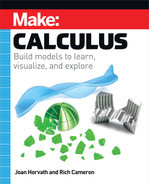
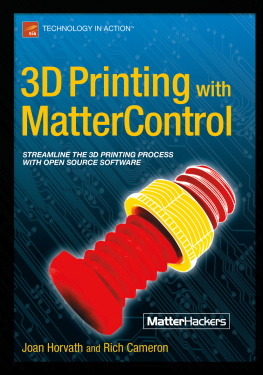
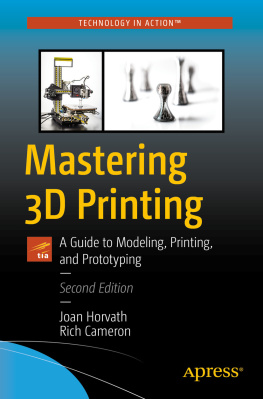
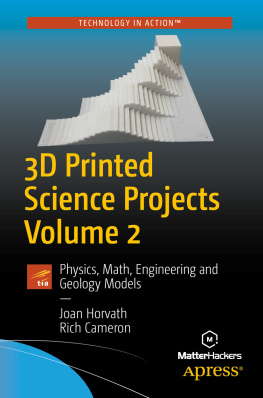

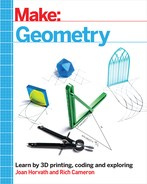
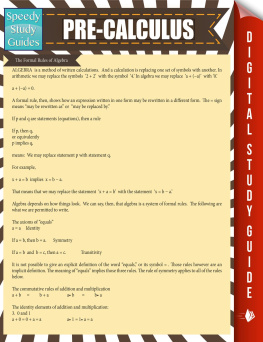


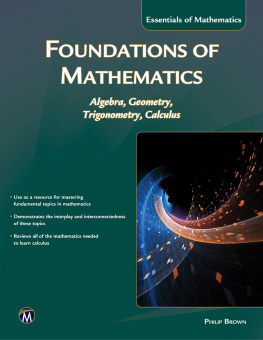
![Chris Monahan [Chris Monahan] - Calculus II](/uploads/posts/book/119088/thumbs/chris-monahan-chris-monahan-calculus-ii.jpg)


